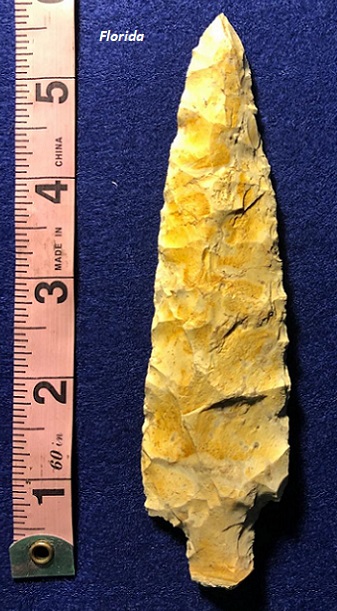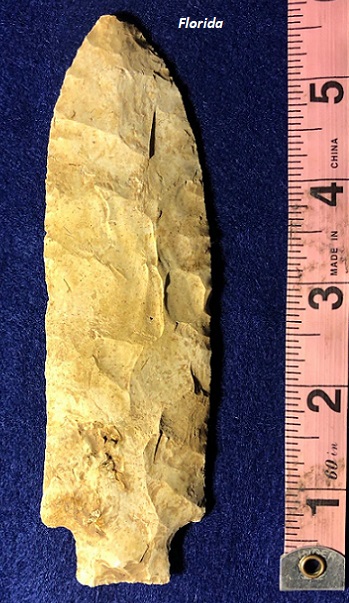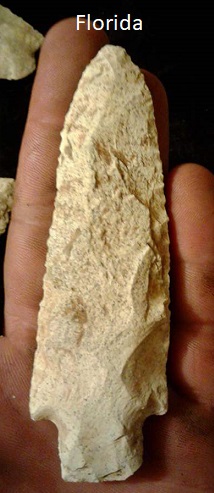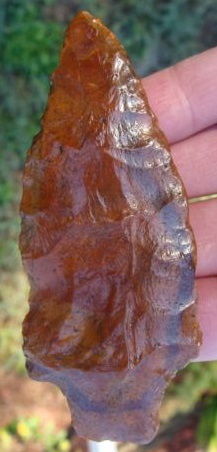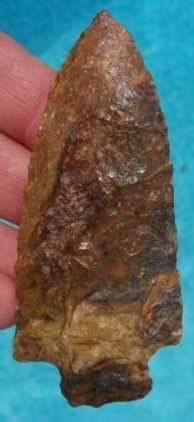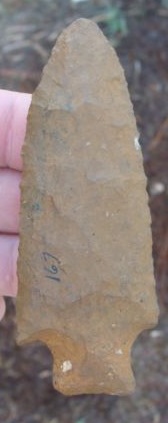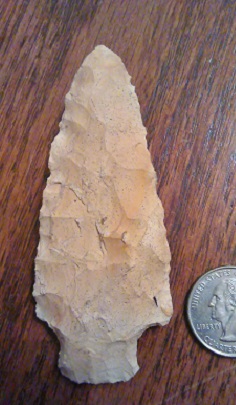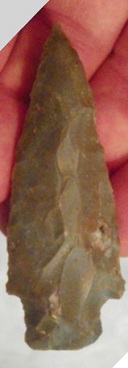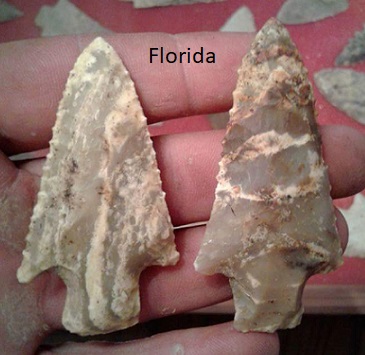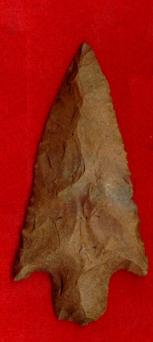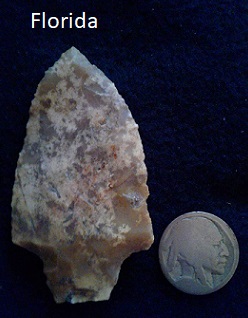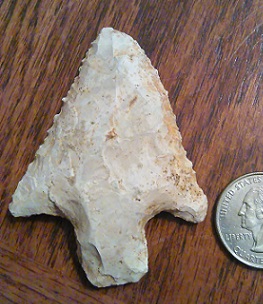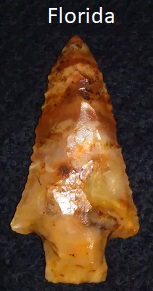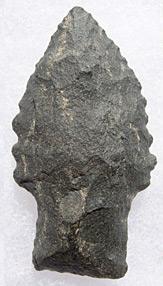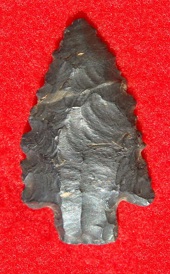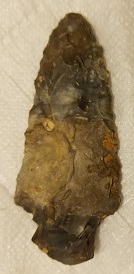Outline is Representative of Size and Shape:

Name Details:
Identified By: Joffre L. Coe
Named For: The Kirk family who owned the property of the type site.
Date Identified: 1964
Type Site: Hardaway Site, Stanly County, North Carolina
Identified By: Joffre L. Coe
Named For: The Kirk family who owned the property of the type site.
Date Identified: 1964
Type Site: Hardaway Site, Stanly County, North Carolina
Point Validity:
Valid type
Coe was a highly respected and pioneering anthropologist in North Carolina archaeology and a preeminent authority on eastern North American anthropology. This type was named in a professional publication and has many professional references. This is considered a valid type.
Kirk Stemmed
Cluster: Kirk Stemmed Cluster Description of Physical Characteristics and Flaking Pattern:
This is a medium to large triangular stemmed point with an elliptical cross section. The blade is thick and most commonly straight or may be slightly excurvate, but is not common. The blade usually lack serrations, but some examples may be serrated. The shoulders are generally slightly barbed, but may vary to horizontal. The stem is straight to slightly expanding with a straight base. This point has a random flaking pattern.
Size Measurements:
Total Length - 45 to 150 mm (50 to 65 mm average), Stem Length - 8 to 13 mm (11 mm average), Blade Width - 24 to 50 mm (30 mm average), Stem Width - 15 to 20 mm (17 mm average), Thickness - 7 to 10 mm
Total Length - 45 to 150 mm (50 to 65 mm average), Stem Length - 8 to 13 mm (11 mm average), Blade Width - 24 to 50 mm (30 mm average), Stem Width - 15 to 20 mm (17 mm average), Thickness - 7 to 10 mm
Commonly Utilized Material:
Additional Comments:
Many argue that the Kirk Serrated and the Kirk Stemmed point are the same and do not distinguish between them. Others argue that they are separate points that need to be identified as separate points based on the base of the points (Justice, 1987). The Serrated point commonly has a concaved to bifurcated base while the stemmed point is most commonly straight, however, there are serrated straight bases and un-serrated bifurcated examples. Johnson et al. (2009), argues that the base is the sole identifier for the different points and that not all Kirk Serrated points are serrated and that some of the Kirk Stemmed points are serrated.
The Kirk Stemmed point has been dated latter than the Kirk Corner Notch point (Farr, 2006).
This point is thought to have evolved into the Stanly point.
Many argue that the Kirk Serrated and the Kirk Stemmed point are the same and do not distinguish between them. Others argue that they are separate points that need to be identified as separate points based on the base of the points (Justice, 1987). The Serrated point commonly has a concaved to bifurcated base while the stemmed point is most commonly straight, however, there are serrated straight bases and un-serrated bifurcated examples. Johnson et al. (2009), argues that the base is the sole identifier for the different points and that not all Kirk Serrated points are serrated and that some of the Kirk Stemmed points are serrated.
The Kirk Stemmed point has been dated latter than the Kirk Corner Notch point (Farr, 2006).
This point is thought to have evolved into the Stanly point.
Distribution: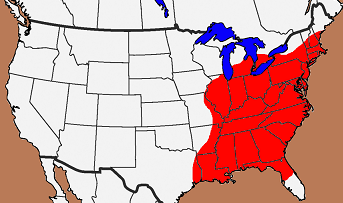

Distribution Comments:
This point is primarily associated with the Eastern Seaboard region of the United States, into the the Gulf Coastal region and the Tennessee River and Ohio River basins. This point is found into the Mississippi River Basin and the Northeastern United States with decreased frequency.
This point is primarily associated with the Eastern Seaboard region of the United States, into the the Gulf Coastal region and the Tennessee River and Ohio River basins. This point is found into the Mississippi River Basin and the Northeastern United States with decreased frequency.
Age / Periods:
Date: 9,500 - 8,500 B.P.
Cultural Period: Early Archaic
Glacial Period: Early Holocene
Culture:
Date: 9,500 - 8,500 B.P.
Cultural Period: Early Archaic
Glacial Period: Early Holocene
Culture:
Age Details:
Other points in this cluster / Related / Associated Points:
Heavy Duty, Jakie Stemmed, Kirk Corner Notch, Kirk Serrated, Searcy, St. Tammany
Heavy Duty, Jakie Stemmed, Kirk Corner Notch, Kirk Serrated, Searcy, St. Tammany

